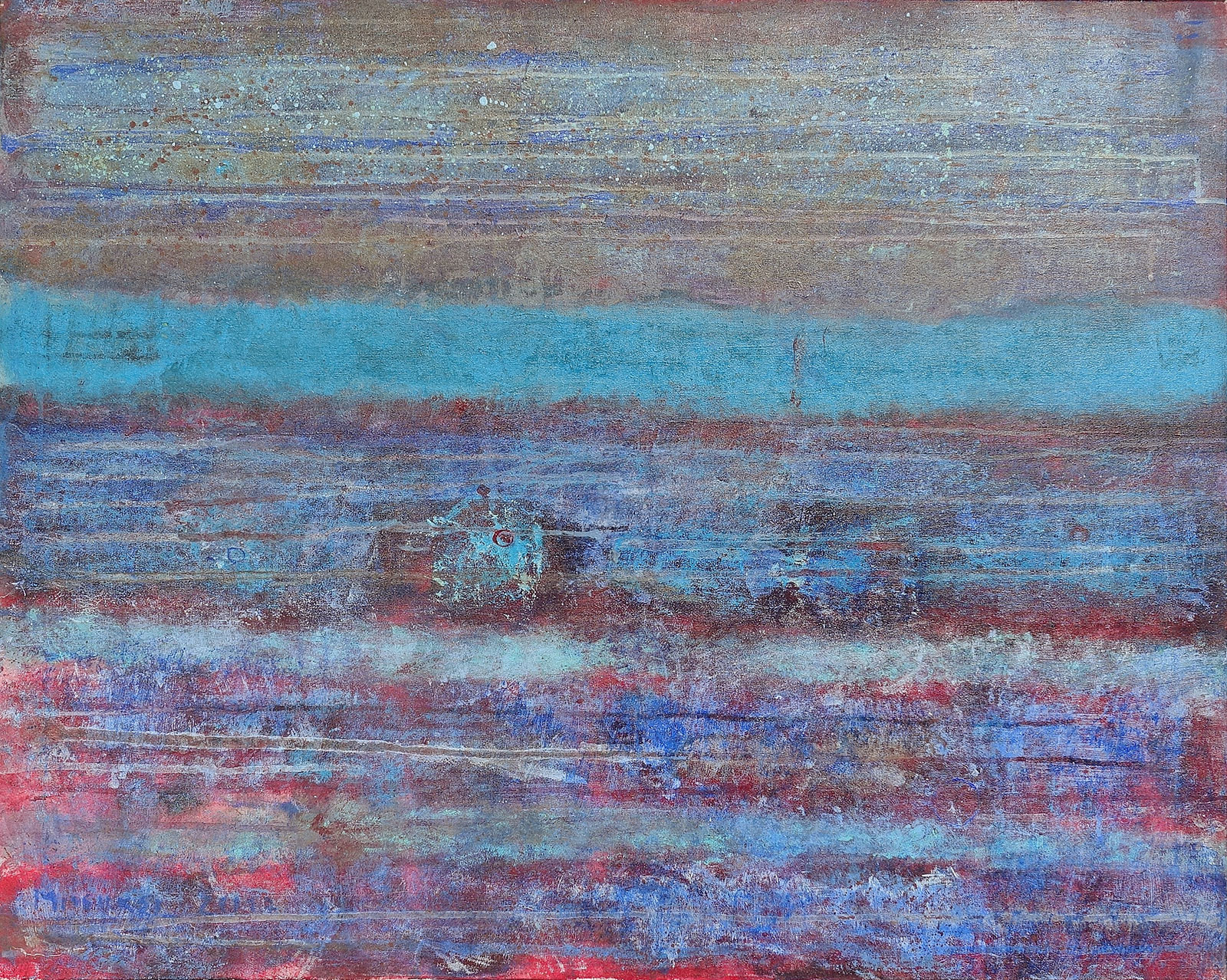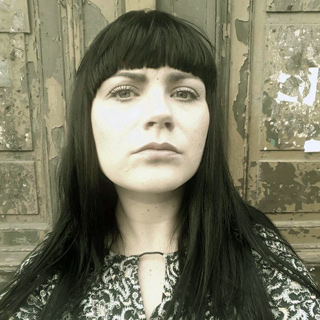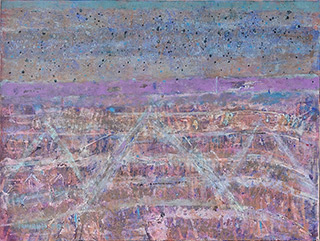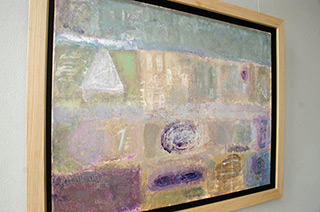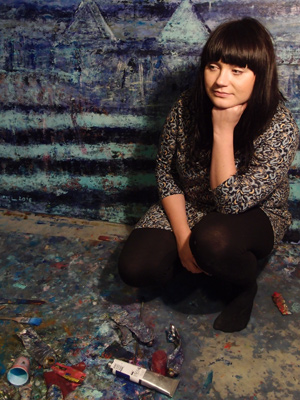Bath with the Painting

The line of the horizon is a reference point; it is the horizon that defines the landscape.
Yes, these are landscapes. There’s no doubt about it.
Martyna Merkel is looking at the world. She observes, contemplates, lives. The painting is the result of her gaze, attention, sensitivity and the way she synthesises impressions on canvas. Elements of descriptiveness disappear in favour of concise construction of forms merely suggesting objectivity.
She does not cross the border of abstraction, she does not go to the other side. “There is so much beauty in nature that you don’t have to make anything up,” she argues.
She sees the landscape everywhere. She says that even when she looks at the floor, she frames it, and gets a landscape.
She also sees unique colour combinations everywhere, sees the beauty in the rust-spotted leaves of a sick pear tree.
She received her first lesson in seeing the landscape, seeing the exceptional beauty of the surrounding world, from her father, painter Janusz Merkel, a student of Józef Hałas. She won’t forget how they strolled through Nadodrze, a run-down district of Wrocław. The artist’s father pointed to the destroyed walls of the buildings to old, post-German cobblestones, and was delighted. She didn’t understand his admiration then, but these walks, conversations about nature, beauty, art, sensitised her to the world, opened her eyes.
She got her first colour lesson from Professor Hałas himself. From the age of two, she went with her father to plein-air painting workshops. More than once, it was Professor Noise who took care of her while the young artists were painting. They used to collect leaves together, put them next to each other. “Look”, he told her, “What a beautiful burgundy colour.” “There’s no burgundy here,” she protested. “Look, it’s there,” he would convince her until she saw it. The professor was right.
So she grew up on colourism, but on this specific Hałas trend of colour limitation.
Since childhood, she knew she wanted to be an artist. She felt right at home during her studies at the Academy of Art and Design in Wrocław. To this day, the smell of oil paint evokes in her the familiar feeling of being in the right place.
She started to paint landscapes after her first year of studies, during a plein-air in Szczytna. The first works were literal; then she started to make the world she saw unreal.
A scholarship in Portugal was an important experience for the young painter. She says here stay in Porto was opening. Fascinated by the matter visible everywhere, she took pictures of gates, doors, shutters and then painted them. She expanded her colour range.
Now, looking at her paintings, we can talk about a rich colour composition. She went beyond the lessons she got from her father and Hałas. Using their teachings, she built her own style, her own creative method.
Martyna Merkel’s paintings delight with their form, colour and mood. This is slow painting, unhurried and contemplative, and the viewer feels it. This unique effect consists of time, concentration and many layers of paint applied slowly.
Monotyping is the artist’s way to handle the matter of the world. She treats the painting like a graphic. She prefers monotyping, which allows for only one print to be made, because it is called the technique of chance. Martyna, following in Professor Hałas’ footsteps, speaks of controlled chance painting. Sometimes the painting surprises her.
She never sits down to paint with a finished picture in her head. She plans a colour range, narrowed down to cold colours with warm accents, or the other way around. Other than that, she lets chance control her, and she never quite knows what the painting will look like after the bath. Because she bathes with her paintings. She didn’t immediately decide to use water – she used to use sponging – paint, wipe, paint, rub. Now, she pours water on the paintings and the structures emerge from underneath. Again, the controlled chance is important.
She likes values, contrasts. She builds layers – dark, light, dark, light. She loves blues, they are her trademark. Lately, she’s been fascinated by rust.
Sometimes she paints for hours only to wash everything away.
As Professor Józef Hałas said, “painting isn’t something you invent, painting is something you arrive at”.



